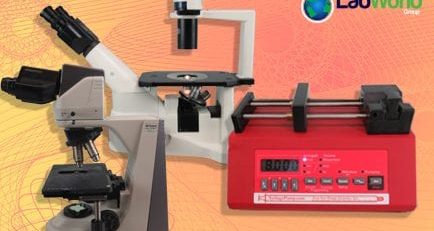Six Reasons Why Your Best Employee Quits You
There’s a saying that employees don’t leave companies, they leave managers – and today they are leaving more often than ever. According to recent Department of Labor statics, the average tenure of an employee in the U.S. is now only 1.5 years. What do these numbers mean? Are managers doing that bad of a job engaging and retaining their people. Is this churn and burn dynamic the new norm? Wherever the macro trends are headed, the ability to engage and retain talented employees is a critical skill for managers. Here are six reasons good employees quit you and how to keep them – none of which involves throwing a pile of money around: [b]1) No Vision[/b] [b][/b]Most employees don’t get out of bed each morning trying to hit a profit number. In the majority of companies there are only a handful of people that truly care about it or, in some cases, even understand exactly what it means to hit that number. As a manager, don’t confuse your financial objectives with vision. Vision feeds financials and not the other way around. For example, Walt Disney DIS +0.16% was the master of painting a compelling vision of the future. He dreamed up Disneyland while his two young daughters were riding the carousel at Griffith Park in Los Angeles. Sitting on a park bench with other parents, he envisioned a place where both children and adults could play together. Today, Walt Disney’s vision is worth $128 billion and is his company is the largest media conglomerate in the world. Successful managers sell their employees on a vision of the future. [b]2) No Connection To The Big Picture[/b] Gallup’s Q12 employee engagement survey asks the following question: “The mission or purpose of my company makes me feel my job is important.” Their extensive research shows that there is a direct correlation between how employees rate that one question and employee retention, customer metrics, productivity, and profitability. Gallup concludes that “The best workplaces give their employees a sense of purpose, help them feel they belong, and enable them to make a difference.” One example of this dynamic is Google GOOG +0.46%. While almost no one understands exactly how Google’s search engine works, its mission is clear: “to organize the world’s information and make it universally accessible and useful.” It is a simple, actionable, and meaningful connection to the huge company. Successful companies and managers understand that business strategies may change, but a mission does not. [b]3) No Empathy[/b] No one joining the workforce today expects to get a gold Rolex after 50 years with the same company. Employers let hundreds and thousands of people go each year while employees are just as likely to leave companies for other opportunities. Generally speaking, there is very little loyalty on either side. But there is an almost ridiculously simple and inexpensive solution for that problem: Take the time to listen to your people. This is not just talk therapy – they should leave the conversation believing that you will take whatever action may be helpful and possible or at least logically explain why nothing can be done. But by leaving your door open to employee concerns and suggestions, leaders encourage them to feel that they have a stake in an organization that considers them important and cares enough to listen. [b]4) No (Effective) Motivation[/b] In the 1990s, I spent several years working as a producer and director of Off Broadway productions. This wasn’t particularly lucrative work and I had to take on waiter jobs to pay my rent. But for theater aficionados like me, waiting tables was just a side job to enable me to do what I loved. In what I considered my “real work,” the rewards frequently consisted of internal gratification or audience applause. I certainly wouldn’t have turned down a big payday, but I could walk away from a poorly paid performance satisfied that I had done good work. On the other hand, as a waiter I measured my success in cash, by the tips I had made. I rarely ended a poorly paid shift simply happy to have provided really good service. What’s more, because my job as a waiter offered nothing more than an opportunity to walk away with cash in hand, my connection to my employer was also monetized – a surprisingly weak connection. In his 2009 book Drive, author Daniel Pink examined decades of social experiments that described the phenomenon that I had experienced in terms of “extrinsic” and “intrinsic” motivators. The “extrinsic” motivators consist of traditional carrot and stick rewards such as cash bonuses or punishment – the reward environment in which waiters work. The “intrinsic” motivators are internal desires to do good work or create a successful product – the goal of many people working in the theatre. Pink’s argument is that, in the modern workplace, the “extrinsic” system of rewards is often a less effective motivator, but one on which too many managers still rely. In fact, there is no greater myth in managing a team or company than believing financial compensation is a sufficient incentive to engage and retain top talent and drive high performance. [b]5) No Future[/b] In her Forbes article “What Employers Need To Know About The Class of 2012,” Jacquelyn Smith cites a recent study that shows that the majority of graduating students are looking for career advancement over anything else. This is certainly not a new concept, but a big disconnect from today’s burn and churn, transient employment market. Creating career paths that are well communicated and understood by employees is not something most companies do well. Even in the best-case scenario where managers are holding regular performance reviews with their employee, employees often don’t understand how to move either horizontally or vertically in an organization. Of course, not every employee is going to end up as the CEO. Likewise, a person who is brilliant at product design won’t necessarily succeed in sales. But, for any employee that is worth retaining, a manager must make clear to them how and where they can move forward on their career path. [b]6) No Fun[/b] For many employees, instant gratification is the new norm. The evolution of film, television, the internet, social media, and handheld devices means that everything is on demand all the time and wherever we may be. As a result, putting in eight straight hours of work at the same desk is less and less attractive to many employees. But this doesn’t mean the work force is lazier, it’s because defining work in such a traditional manner doesn’t make sense to employees in today’s constantly interconnected and fast-paced world. For businesses, this means that attracting, engaging, and retaining top talent depends on reinventing their work environments, blurring the line between work and play. Companies must embrace a culture of increased autonomy and innovation, and engage employees around a powerful mission and purpose. In 2003, Best Buy BBY +1.19%’s H.R. leaders began piloting a new approach to this engagement problem. Slowly, department-by-department, they rolled out a program called ROWE (Results-Only Work Environment) that relied on increased employee engagement by reducing work to a baseline: productivity. That was it! Employees were released from a world of mandatory meetings, nine-to-five schedules, and long commutes. It was a radical departure and the results were emphatically positive, engagement rose, causing a spike in performance. The pilot continued until it was adopted throughout the entire Best Buy headquarters operation. In 2006 the company was included on Fortune’s list of America’s Most Admired Companies. Of course, ROWE was designed to relieve the tedium of office work and there are serious limitations to this specific program. It is hard to imagine how a schedule-free, post-geographic work environment could be successful for a restaurant or a roofing company. And, sure enough, Best Buy was unable to roll out a version of ROWE to help combat the company’s 67% turnover rate at their retail stores. But the biggest lessons of ROWE’s measurable success – thinking about work as fun and flexible – can still be applied to any size and type of business, creating more productive work environments at every level.














